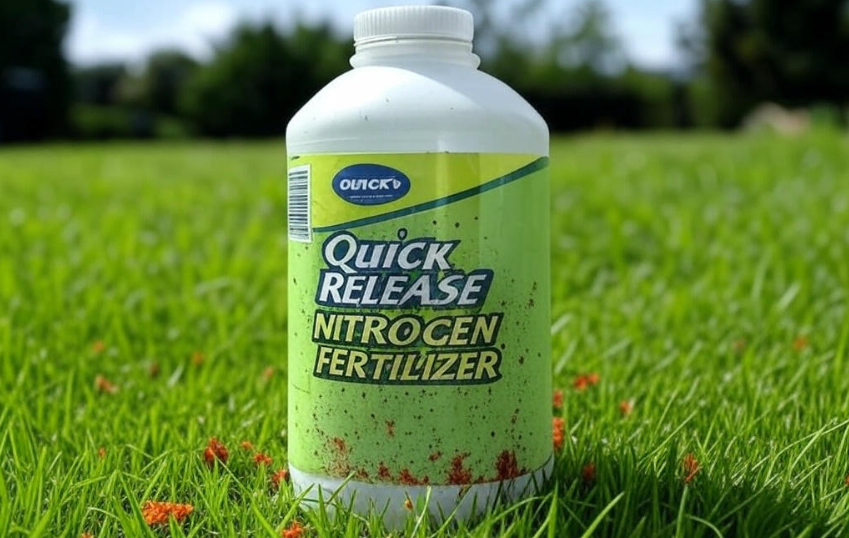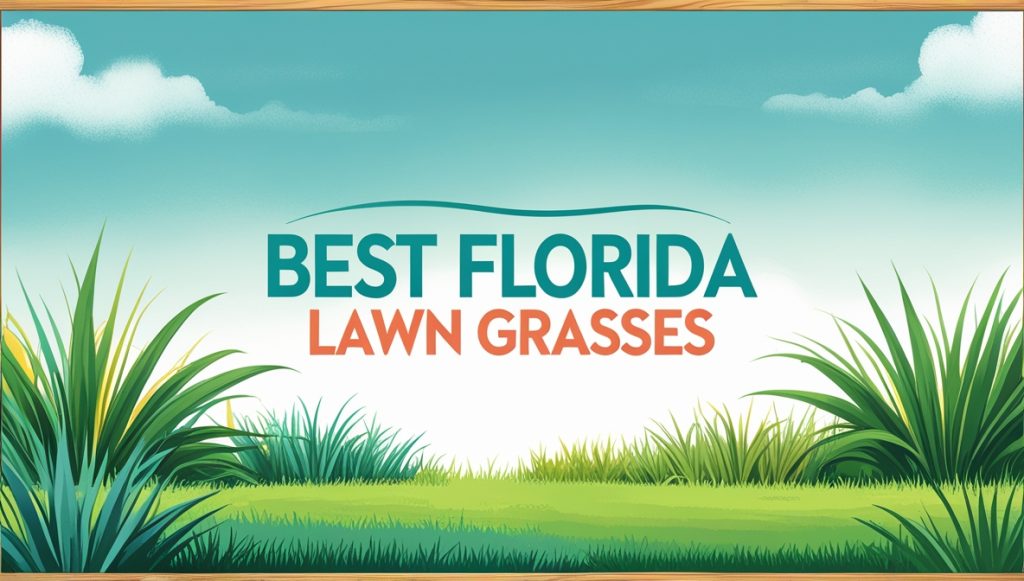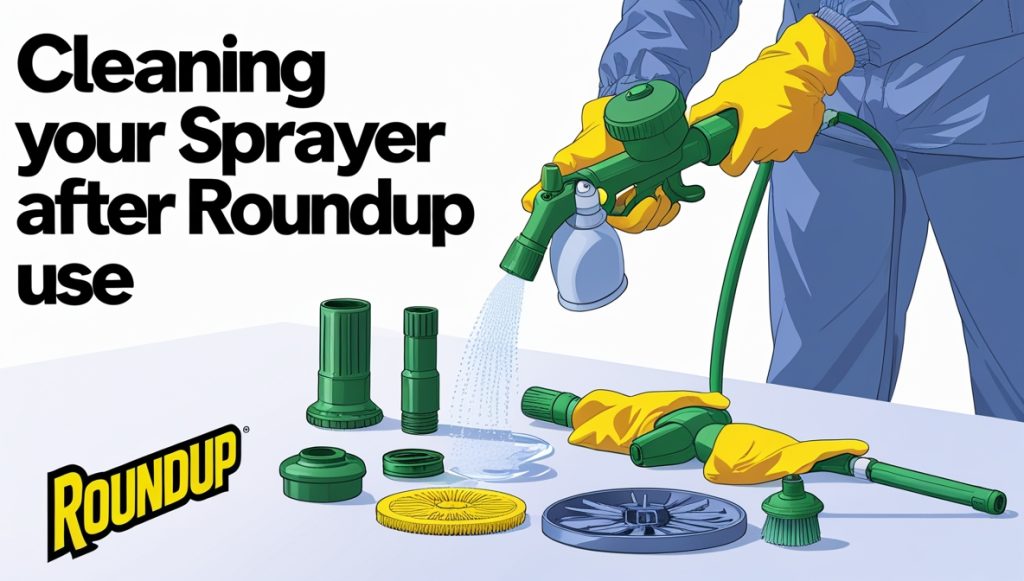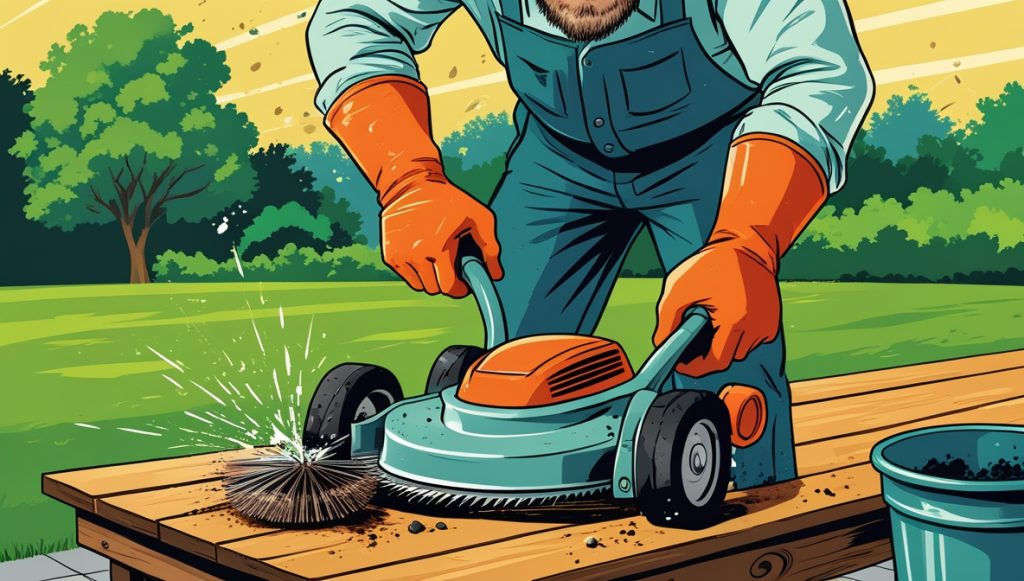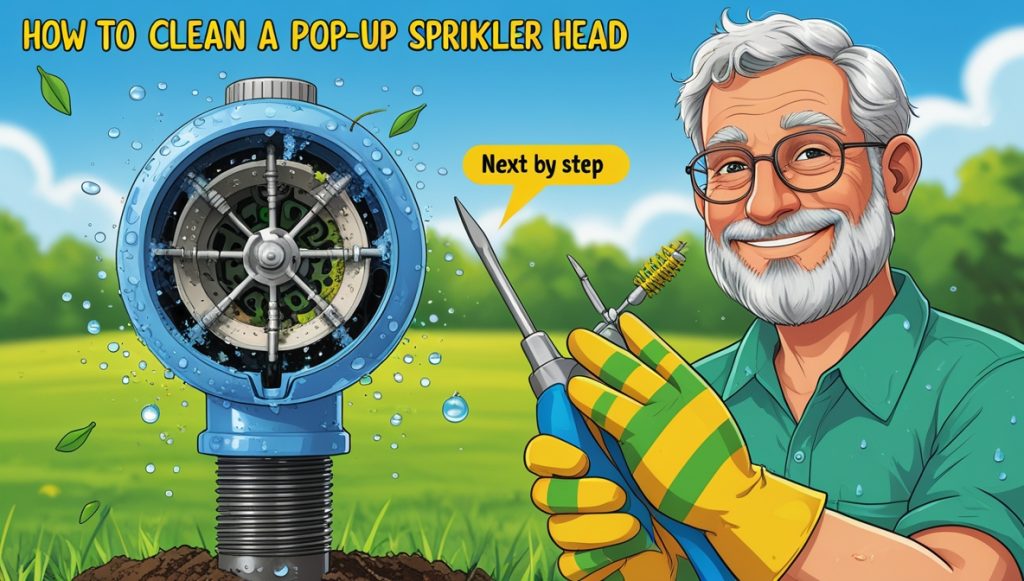If you’ve noticed pinkish-red patches creeping across your lawn, you might be dealing with red thread—a common fungal disease that can turn your lush green grass into an unsightly mess. Fortunately, there’s a solution that can help your lawn bounce back quickly: quick-release nitrogen fertilizer. In this in-depth blog post, we’ll explore what red thread is, why it happens, and how quick-release nitrogen fertilizer can be your go-to remedy. We’ll also cover application tips, benefits, drawbacks, and complementary lawn care strategies to keep your turf healthy and vibrant. Let’s dive in!
Contents
- What Is Red Thread and Why Does It Affect Your Lawn?
- Understanding Quick-Release Nitrogen Fertilizer
- Why Quick-Release Nitrogen Fertilizer Helps with Red Thread
- How to Apply Quick-Release Nitrogen Fertilizer for Red Thread
- Benefits of Quick-Release Nitrogen Fertilizer for Red Thread
- Potential Drawbacks and How to Mitigate Them
- Complementary Strategies to Combat Red Thread
- When to Use Quick-Release Nitrogen Fertilizer
- Real-Life Success Stories
- Choosing the Best Quick-Release Nitrogen Fertilizer
- Long-Term Prevention of Red Thread
- Conclusion: Restore Your Lawn with Quick-Release Nitrogen Fertilizer
What Is Red Thread and Why Does It Affect Your Lawn?
Red thread, caused by the fungus Laetisaria fuciformis, is a lawn disease that thrives in cool, wet conditions—typically in spring or fall. It’s easily recognizable by the pink or red, thread-like structures that appear on grass blades, often accompanied by patchy, discolored areas. While it doesn’t usually kill the grass outright, it weakens the turf, making it look thin and unhealthy.
Causes of Red Thread
Red thread tends to strike when your lawn is under stress. Here are the primary culprits:
- Nitrogen Deficiency: Grass lacking sufficient nitrogen becomes weak and more susceptible to fungal infections like red thread.
- Poor Soil Conditions: Compacted soil, low pH, or inadequate drainage can create an environment where fungi flourish.
- Weather: Cool temperatures (50-75°F) and high humidity provide the perfect breeding ground for red thread.
- Lawn Stress: Overuse, improper mowing, or neglect can leave your grass vulnerable.
If your lawn is showing signs of red thread, addressing the underlying issue—especially nitrogen deficiency—is key to recovery. That’s where quick-release nitrogen fertilizer comes into play.
Understanding Quick-Release Nitrogen Fertilizer
Fertilizers are labeled with an N-P-K ratio (nitrogen, phosphorus, potassium), and nitrogen is the star player when it comes to greening up your lawn and boosting growth. Quick-release nitrogen fertilizers are designed to deliver this essential nutrient fast. Unlike slow-release options, which dole out nutrients over weeks or months, quick-release fertilizers dissolve rapidly in water, making nitrogen immediately available to your grass.
Types of Quick-Release Nitrogen Fertilizers
- Urea (46-0-0): A high-nitrogen option that’s affordable and widely available.
- Ammonium Sulfate (21-0-0): Provides nitrogen and sulfur, which can also help adjust soil pH.
- Ammonium Nitrate (34-0-0): A potent, fast-acting source of nitrogen (though less common due to safety regulations).
- Liquid Fertilizers: Pre-mixed or concentrated solutions that can be sprayed for quick absorption.
How It Works
When applied, quick-release nitrogen fertilizers break down in the presence of moisture—whether from rain, irrigation, or morning dew. The nitrogen is absorbed by grass roots and blades, triggering rapid shoot growth and a vibrant green color. This fast action is exactly what your lawn needs when red thread has taken hold.
Why Quick-Release Nitrogen Fertilizer Helps with Red Thread
Red thread often signals that your lawn is nitrogen-starved. Without enough nitrogen, grass struggles to produce chlorophyll, the compound responsible for its green hue and energy production. Weak, pale grass is an easy target for opportunistic fungi like red thread. Here’s why quick-release nitrogen fertilizer is an effective solution:
1. Rapid Nutrient Boost
Quick-release nitrogen delivers an immediate dose of nutrients, helping your grass recover faster than slow-release alternatives. Within days, you’ll notice greener, healthier blades as the nitrogen kicks in.
2. Strengthens Grass Against Fungi
Nitrogen promotes vigorous growth, thickening your turf and making it harder for red thread to spread. Healthy grass is naturally more resilient to disease.
3. Corrects the Root Cause
Since nitrogen deficiency is a primary trigger for red thread, addressing it directly with a quick-release fertilizer tackles the problem at its source, rather than just masking symptoms.
4. Quick Aesthetic Improvement
If your lawn’s appearance has taken a hit, the fast greening effect of quick-release nitrogen can restore its curb appeal in a matter of days—perfect if you’re hosting an event or just want to enjoy your yard.
How to Apply Quick-Release Nitrogen Fertilizer for Red Thread
Using quick-release nitrogen fertilizer effectively requires some know-how to avoid overdoing it. Here’s a step-by-step guide:
Step 1: Diagnose the Problem
Confirm that red thread is the issue. Look for pink or red threads on grass blades, especially in patchy or thinning areas. If you’re unsure, consult a local lawn care expert or extension service.
Step 2: Test Your Soil
A soil test can reveal nitrogen levels and pH. Red thread thrives in acidic soils (pH below 6.0), so you may need to adjust pH with lime alongside fertilization. Aim for a pH of 6.0-7.0 for optimal grass health.
Step 3: Choose the Right Fertilizer
Opt for a high-nitrogen, quick-release product like urea or ammonium sulfate. Check the label for the percentage of water-soluble nitrogen (WSN)—this indicates how much is immediately available.
Step 4: Calculate the Application Rate
Apply 0.5-1 pound of actual nitrogen per 1,000 square feet. For example:
- Urea (46-0-0): 1-2 pounds of product per 1,000 sq ft.
- Ammonium Sulfate (21-0-0): 2.5-5 pounds per 1,000 sq ft.
Use a spreader for granular fertilizers or a sprayer for liquids, and measure your lawn to avoid over-application.
Step 5: Apply on a Dry Lawn
Spread the fertilizer evenly when the grass is dry, then water it in lightly (about 0.25 inches) to activate the nitrogen. Avoid heavy watering, which can cause runoff.
Step 6: Monitor and Repeat
Watch your lawn over the next week. You should see greening within 3-7 days. If red thread persists after two weeks, apply a second light dose (0.25-0.5 pounds of nitrogen per 1,000 sq ft) or consider a fungicide as a backup.
Benefits of Quick-Release Nitrogen Fertilizer for Red Thread
Here’s why this approach stands out:
- Speed: Results are visible in days, not weeks.
- Cost-Effective: Quick-release options like urea are often cheaper than slow-release fertilizers.
- Targeted Action: Directly addresses nitrogen deficiency, the key driver of red thread.
- Versatility: Works on all grass types affected by red thread, including cool-season varieties like fescue, ryegrass, and bluegrass.
Potential Drawbacks and How to Mitigate Them
While quick-release nitrogen fertilizer is a powerful tool, it’s not without risks. Here’s what to watch out for:
1. Risk of Burning
Over-applying can “burn” your grass, leaving brown, dehydrated patches. Stick to recommended rates and water in the fertilizer to dilute it.
2. Short-Lived Effects
The boost lasts only 2-4 weeks, so you may need follow-up applications or a switch to slow-release fertilizer for long-term health.
3. Nutrient Leaching
Excess nitrogen can wash away into waterways, harming the environment. Apply just before light rain or irrigate sparingly to keep it in the soil.
4. Excessive Growth
Rapid shoot growth means more mowing. Time your application when you’re ready to keep up with maintenance.
To minimize these downsides, use precise measurements, follow label instructions, and pair quick-release fertilizer with good lawn care practices.
Complementary Strategies to Combat Red Thread
Fertilizer alone won’t prevent red thread from returning. Combine it with these tactics for a healthier lawn:
1. Improve Lawn Maintenance
- Mow Properly: Cut no more than one-third of the grass height at a time, and keep blades sharp to reduce stress.
- Water Wisely: Water deeply but infrequently (1 inch per week) in the morning to avoid prolonged moisture on blades.
- Aerate: Relieve soil compaction to improve drainage and nutrient uptake.
2. Adjust Soil pH
If your soil is too acidic, apply lime to raise the pH to the ideal range (6.0-7.0). This makes it less hospitable to red thread.
3. Use Fungicides (If Needed)
For severe cases, a fungicide like azoxystrobin or propiconazole can knock out active red thread. Use it sparingly and follow fertilizer treatment to support recovery.
4. Transition to Slow-Release Fertilizer
After the initial quick-release boost, switch to a slow-release nitrogen fertilizer (e.g., Milorganite) for sustained nutrition over 6-8 weeks. This prevents future deficiencies.
When to Use Quick-Release Nitrogen Fertilizer
Timing is critical for maximum effectiveness:
- Spring or Fall: Red thread peaks in cool, wet seasons, making these ideal times for quick-release nitrogen.
- Post-Diagnosis: Apply as soon as you confirm red thread to halt its spread.
- Before Events: If you need a fast fix for aesthetics, use it 1-2 weeks prior.
Avoid applying during hot, dry summer months, as quick-release nitrogen can stress grass further in high temperatures.
Real-Life Success Stories
Lawn enthusiasts and homeowners have seen great results with this approach. For example:
- John from Oregon: “My fescue lawn was a mess with red thread after a rainy spring. I used urea at 1 pound per 1,000 sq ft, and within a week, the pink patches faded, and the grass was green again.”
- Sarah from Virginia: “I paired ammonium sulfate with aeration, and my lawn hasn’t looked this good in years. No more red thread!”
These stories highlight how quick-release nitrogen can turn a struggling lawn around fast.
Choosing the Best Quick-Release Nitrogen Fertilizer
Not all fertilizers are created equal. Here’s what to look for:
- High Nitrogen Content: Aim for an N-P-K ratio where nitrogen dominates (e.g., 46-0-0 or 21-0-0).
- Water-Soluble: Check that most of the nitrogen is listed as “water-soluble” on the label.
- Availability: Urea and ammonium sulfate are easy to find at garden centers or online.
- Additives: Some products include sulfur or micronutrients like iron for extra benefits.
Top picks include:
Scotts Turf Builder Quick-Release: A balanced option with fast-acting nitrogen.
The Andersons Urea: Pure, high-nitrogen granules for a potent boost.
Pennington Liquid Fertilizer: A spray-on solution for quick absorption.
Long-Term Prevention of Red Thread
Once you’ve tackled red thread with quick-release nitrogen, keep it at bay with these habits:
- Regular Fertilization: Apply nitrogen-rich fertilizer 4-6 times a year, mixing quick- and slow-release types.
- Soil Testing: Check nutrient levels annually to stay ahead of deficiencies.
- Healthy Practices: Overseed thin areas, dethatch as needed, and maintain proper mowing height (2.5-3.5 inches for most grasses).
Conclusion: Restore Your Lawn with Quick-Release Nitrogen Fertilizer
Red thread doesn’t have to spell doom for your lawn. With quick-release nitrogen fertilizer, you can address the root cause—nitrogen deficiency—and get your grass back to its green glory in no time. By applying it correctly, pairing it with smart lawn care, and transitioning to long-term maintenance, you’ll not only beat red thread but also build a stronger, healthier turf.
Ready to take action? Grab a bag of urea or ammonium sulfate, measure your lawn, and give your grass the boost it needs. Have questions or success stories? Drop them in the comments below—we’d love to hear from you!
